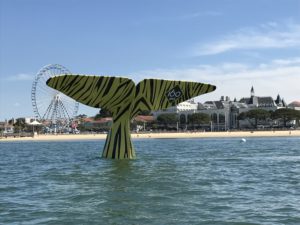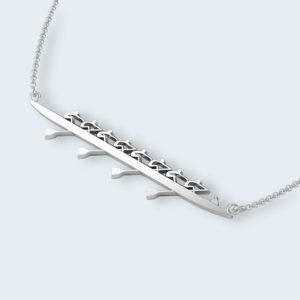FISA are providing races for Olympians where the stakes are high, where we want to see which crew is fastest and strongest – not which lane has the most current or the strongest wind.
So does a race have to be fair before it can be good?
There are other races, courses other than six lanes side-by-side, where the inherent unfairness has become a highlight of the race, where current and corners add to the challenges instead of detracting from the result. Take the Oxford-Cambridge Boat Race for example. The contest is between two universities and over a course that is about 4 ¼ miles long – just 2 crews and no possibility for anyone outside the following boats to follow the race from beginning to end. Yet this is a race that attracts 250,000 spectators to the banks of the Thames and with TV coverage has millions more viewers – not even the Olympics do that.


How have they managed that?
The race is run against the current but with the tide making one lane of water quicker than the rest. That’s one lane that can fit two boats . . . if they co-operate . . . and bingo! There’s the secret: you make two boats vie for one place and because of the nature of the river any crew deviating from that course is punished by the opposing current .
Sound too simple?
It would be if the course was neatly marked out and there for anyone to see but it’s not. Even long-time veterans of the race argue about the best lines to take round the corners and through the bridges and about how far across the river one should be. A good coxswain can feel when the boat’s with the tide; a crew can certainly feel when that changes to going against the current but those of us watching will only see the dramatic slowing down. Ho hum, you think: the first crew to make a mistake loses. Sometimes but not always. The double bend in the course means there’s still place enough to get back in the race and the great thing about a race of such long standing is that there’s always a story to tell: boats have come from behind, boats have lost their lead, crews have been great but coxswains have been poor (and vice-versa, of course) – 157 stories so far.
We could do that!
And a lot of people have tried and a lot of other 2 boat races have their devotees. One of them is the Great Race raced on the Waikato River in New Zealand: Waikato University races either an Oxford crew or a Cambridge crew, alternating year to year. The difference is that they race with the current; this is so that the race finishes in town amongst the spectators.
What difference does that make?
The two crews race hard for the first corner to get the inside running but after that there are two options: you go with the current on the left bank or you go with the current on the right bank. OK, you might lose some time crossing to the other side but not as much as you would if you tried to stay alongside the other crew and out of the current. So, no contest or at least no visible contest for much of the race. The organisers recognised this and introduced a cross-over point. This year, they’ve introduced a third crew; take a look at their new rules – see if you can guess what’s going to happen when 3 even crews are racing for the finish line!








This Post Has 2 Comments
I think you have got your races mixed up…… – the Boat Race races WITH the current. The GREAT RACE races AGAINST the current
Hi Raf, yes Alan has it right that Boatrace is downstream and Gallagher Great Race is upstream. This year’s event does indeed have a three boat line up: Cambridge (UK) and Melbourne (Australia) Uni’s lining up against the Uni of Waikato for the men’s event; Sydney, Melbourne and Waikato Uni’s for the women. The event will be streamed live and free at http://www.thegreatrace.co.nz from 9am through to 2.30pm (NZ time which is 12 hours ahead of GMT). The detailed schedule including corporate, schools, erg racing etc will be posted soon. The women’s race starts at 12.30pm and the men’s Great Race at 1.20pm.
Rob Hamill